
British Airborne RAMC
British Airborne RAMC
The requirement for Airborne Medical Services became evident in 1941, as Airborne commanders began to expand upon the scope of the newly-formed Airborne Forces.
Fledging units had little or no assigned Medical personnel attached to their units. Airborne commanders decided they required designated Airborne Medical Service units, which would parachute into Battle alongside parachute infantry units, which soon came under the official auspices of the Royal Army Medical Corps (RAMC). Consequently, Lt Col Malcolm MacEwan and his Second-in-Command (2-i-c) Major Wheatley were called upon to help formulate procedures and Airborne Medical Service plans as the senior officers of the newly-formed 16 Parachute Field Ambulance RAMC created in early 1942. Although this was initially conceived for the (later renamed 1st) Airborne Division, these plans became the basis for all British Airborne Medical services.
A Parachute Field Ambulance would typically consist of around 180 ranks, led by officers from the RAMC, the Army Dental Corps and fifteen surgical ranks. Full Medical and surgical facilities were intended to meet the needs of surgical and convalescent medical staff to treat wounds and hold casualties for a minimum of ten days and up to a maximum of two weeks. In the early stages, it took months before they were equipped with suitable kit for lightweight Airborne operational capabilities. The incorporation of folding stretchers, operating tables and the correct medical supplies, which included ‘Don’ and ‘Sugar’ packs of various bandages, morphine and plasma packs to save as many lives as they could on the front line.
From these early concepts, seven Parachute (and later, more heavily equipped Airlanding) Field Ambulance units were progressively formed across 1st Airborne Division, 2nd Independent Parachute Brigade, and finally 6th Airborne Division. Created in order to support and care for wounded Airborne soldiers on the battlefield, this role put surgeons and medical personnel on the front line, alongside the purposefully advanced position of the Airborne Forces, instead of more typical, rather safer positions in designated casualty areas to the rear of infantry battlelines. With so many soldiers dropped behind enemy lines this role inevitably meant evacuation of the severely wounded would take much longer (and would improve impossible in some cases, especially during the Battle of Arnhem). Although some Airborne medics were attached to individual Battalions, these dedicated units bolstered the Airborne medical capabilities substantially. There important role undoubtedly helped to save lives, and increased morale for soldiers who knew dedicated medics were on hand during intense combat situations.
In practice, taking part in dangerous Airborne missions frequently created unusual problems for Medical Staff. Their Main Dressing Stations (MDS) and Regiment Aid Posts (RAPs) and Casualty Collection Posts (CCPs) were unusually exposed, requiring sometimes frequent relocations to more secure positions, and were often prone to being overrun in intense battle situations which prompted a relatively high number of Airborne RAMC to become Prisoners of War, especially at Arnhem. In addition, problems experienced by all Airborne Forces were often brought into sharp focus, affecting operational capabilities. For example during the landings at Arnhem, 133 PFA was not able to fully function as a result of around 30 members being dropped some distance from the DZ on the second lift.
With the frequent ingenuity and distinguished bravery however, the Airborne Medics developed a huge skill for improvisation and empassioned negotiation (including with enemy personnel) to ensure to wellbeing and safety of the men in their care. During the Rhine Crossing, Corporal Frederick Topham, a medic attached to 1st (Canadian) Parachute Battalion, became the only Airborne medic to be awarded the Victoria Cross for his extraordinary dedication and bravery on 24 March 1945.
At the end of the Second World War, Airborne RAMC units were initially either disbanded or reassigned. Some Airborne RAMC were sent with the 16th Airborne Division to Palestine and 225 had a short spell in the Far East. However, in common with all Airborne units, many were eventually disbanded in the late 1940s.
The Airborne Medical presence continued however, 127 Para Fld Amb was re-numbered 23 Parachute Field Ambulance RAMC and was retained in 16th Parachute Brigade, and later 5 Airborne Brigade in the 1990s, whilst 144 Para Field Ambulance was an Airborne force drawn from the Territorial Army as part of 44th Parachute Brigade (V).
The tradition continues with 16 CS Medical Regiment RAMC (which traces its heritage back to 16 PFA), now part of 16 Air Assault Brigade. This is supported by the volunteer force of 144 Para Medical Squadron (V).
Airborne RAMC Units:
With assistance from Niall Cherry - grateful thanks to the Student Volunteer Team
Newsletter Signup
Donate
Make a donation to Airborne Assault ParaData to help preserve the history of The Parachute Regiment and Airborne Forces
The Airborne Shop
The Airborne Shop is the official shop of Support Our Paras (The Parachute Regiment Charity RCN1131977).
Profits from all sales made through our shop go directly to Support Our Paras, so every purchase you make with us will directly benefit The Parachute Regiment and Airborne Forces.


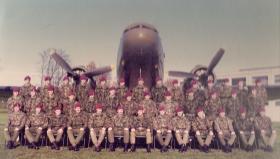
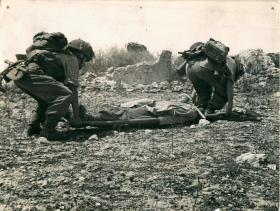
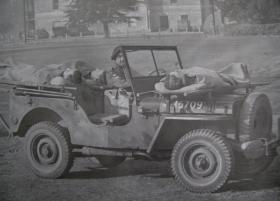
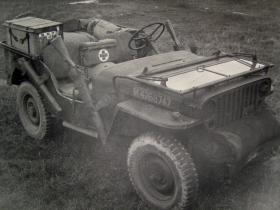
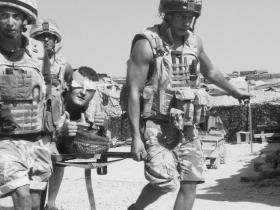
Latest Comments
There are currently no comments for this content.
Add Comment
In order to add comments you must be registered with ParaData.
If you are currently a ParaData member please login.
If you are not currently a ParaData member but wish to get involved please register.